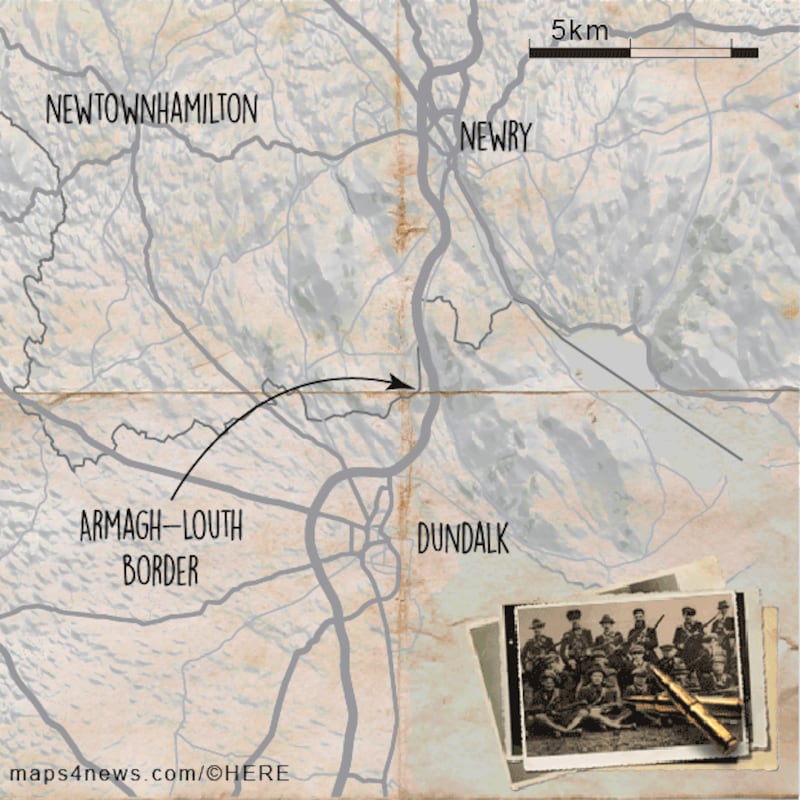County Louth
Incident IRA attack on a train on Armagh-Louth border
Date June 21st, 1921
Fatalities 5
During the Troubles, Dundalk was labelled “El Paso”, a place where the hard men of the republican movement hung out and waited for their next foray across the border.
During the War of Independence, it had the opposite reputation, being “sneeringly hostile” to the IRA, according to a letter in the Brigade Activity Reports.
In its submission to the office of the referee adjudicating on pension claims, men from the 4th Northern Division of the IRA outlined the difficulties they had in operating in north Louth.
Dundalk, they claimed, was a town of “British shoneens, the British camp hangers-on and the Ancient Order of Hibernians”, all of whom were “virulently opposed to the national movement”.
A large number of homes in the Co Louth town “had at least one if not more ex-British soldiers as a member” and Dundalk was firmly a garrison town where the British army held sway.

“Considerable moral courage, not to speak of physical courage, was required of anyone having anything to do with Sinn Féin and the IRA here in these days,” says the letter, which is published in the accounts of 1 North Louth Brigade (4th Northern Division).
"Their task would have been more pleasant if it had to be carried out in the heart of England itself because treachery and the very bitter hatred that was part and parcel of the Irish loyalist would not be encountered, or at least would be expected and prepared for."
In adjudicating on pensions claims for the area, the members of the division said those involved in the IRA were “liable to a stab in the back at any time and their members were few, having regard to the population”.
IRA members in the area were frequently in place to carry out ambushes, though they were often called off by their superior officers. Therefore, the men argued, they were entitled to service certificates though the legislation stated that an applicant had to have engaged the enemy for such a certificate to be issued.
‘Ring of enemy forces’
The officer commanding No 9 Brigade in south Louth also wrote of the difficulties of operating in a county where there were "4,000 Black and Tans in Gormanstown, a company of military in Drogheda, two RIC barracks in Drogheda, strongly held . . . all forming a ring of enemy forces around the area".
Frank Aiken, who went on to have a long career as a government minister in successive Fianna Fáil governments, was one of six men named who participated in the Adavoyle train ambush, one of the largest engagements in the area during the War of Independence against Crown forces.
Three British soldiers and two civilians were killed when the IRA detonated a mine under a troop train on the Armagh-Louth border on June 21st, 1921. The soldiers from the 10th Hussars were returning to the Curragh from the opening of the Northern Ireland parliament, where they had acted as escort to King George VI.
A note in the files from the 3rd battalion (1 Northern Louth Brigade, 4th Northern Division) lists cross-border activities which occurred in early 1922, after the signing of the Anglo-Irish Treaty and before the Civil War, when many in border areas were actively trying to destabilise the new Northern state.
“From January 1922, the Northern government forces became very active. End of February (1922), 10 o’clock curfew was imposed and all volunteers were ordered to mobilise in camps at night and sleep together under arms, with guards posted to prevent surprise by Northern forces.”
The battalion was involved in "continuous activities in Northern Ireland", culminating in an attempted attack on Camlough police barracks in Co Armagh in March 1922. This was followed by a series of tit-for-tat killings.
Most of the members of the 4th Division sided with the anti-Treaty side in the Civil War. They were involved in the rescue of Republican prisoners from Dundalk Barracks when they blew a hole in the prison wall on July 27th, 1922.
See also:
[ 1st Northern Louth Brigade, 4th Northern DivisionOpens in new window ]










